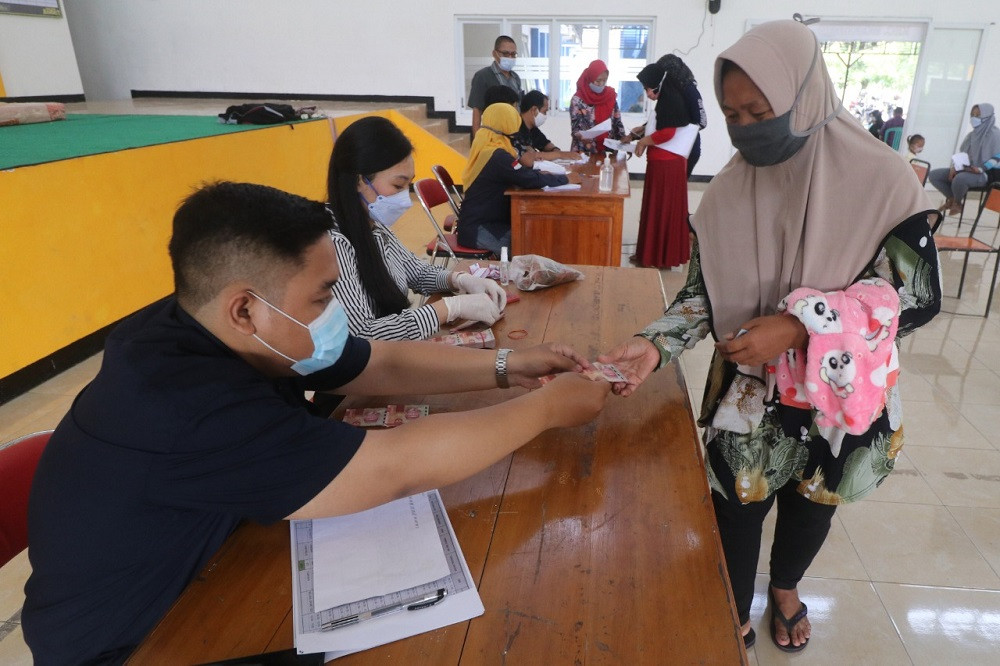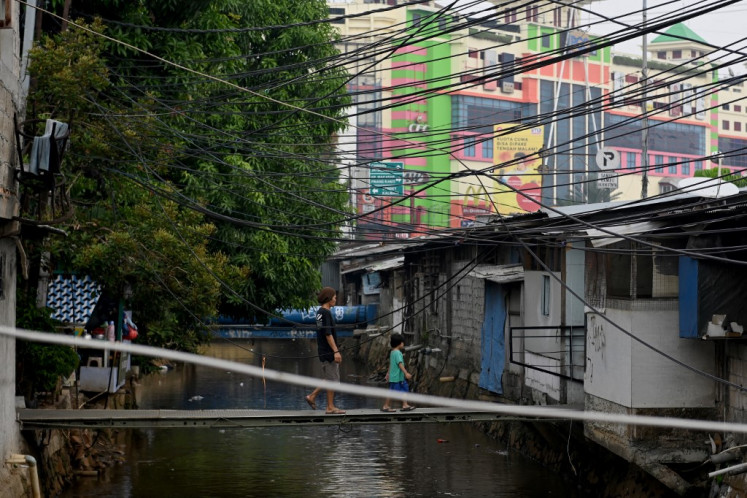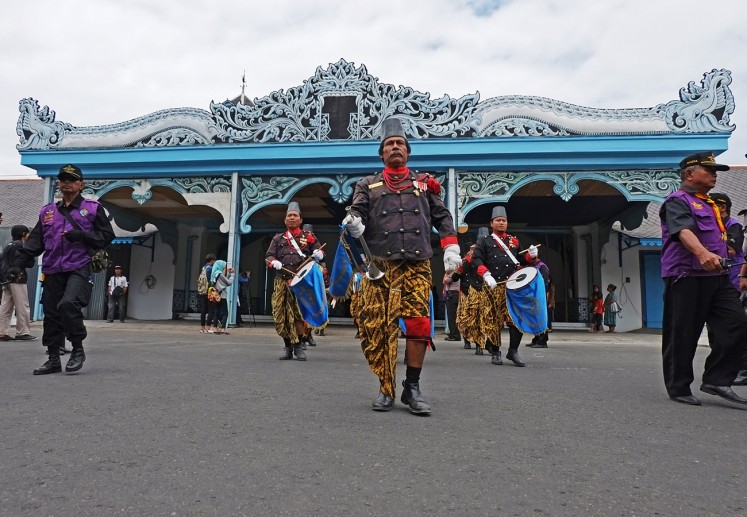Realizing financial inclusion for the world’s poorest
These women only used their accounts to withdraw cash from the Social Affairs Ministry without using, or even knowing, any other basic banking services.
Change text size
Gift Premium Articles
to Anyone

A
pproaching its third decade, the Family Hope Program (FHP) is one of Indonesia's main social assistance policies, and in recent years its government-to-person (G2P) disbursement process has been digitized for the 10 million poorest females in Indonesia. This digitized G2P payment is an initiative made under the administration of President Joko “Jokowi” Widodo in 2017, based on the mission of turning all Indonesians into a banked population.
Before digitization, since 2007 the FHP had been Indonesia's conditional cash transfer program whose series of programs comprising: G2P cash payments via the post office; top-down monitoring regarding the use of G2P cash, executed by facilitators employed by the Social Affairs Ministry (for example for pregnant women, the G2P cash must be allocated to pay for routine pregnancy check-ups); family development session (FDS), educational sessions about proper financial planning and family development and the ultra-poor graduation program.
Given the complexity of Indonesia's demographic, geographical and cultural conditions, digitizing the FHP disbursement in 2017 was considered a very bold step for Indonesia.
Although considered bold, the goal of digitizing Indonesia's FHP has drawn a lot of debate regarding the readiness of program executors, infrastructure or the readiness of its G2P beneficiaries.
In accordance with the general promise of digitizing G2P payments, the initial target was that the extremely marginalized population would be incorporated into the formal banking system where access to microfinance would be easier.
By incorporating 10 million poor women into microfinance services, they were expected to be able to access microloans, microinsurance, safe savings and transfer activities, empowered to start small-medium businesses and ultimately break the chain of poverty, rather than merely being passive beneficiaries.
However, unfortunately, research from Women's World Banking in 2020 found that although the G2P payments technical implementation was considered a success, the initial objective of digitizing this program had not been achieved because 94 percent of the 10 million poor women were dormant bank account users.
The definition of dormant set by Women's World Banking is the absence of any activity other than cash withdrawals in the last three months. This means that these women only used their accounts to withdraw cash from the Social Affairs Ministry without using (or even knowing) any other basic banking services. This result shows that the shift from FHP disbursement pre-digitization—through the post office—to digitalization, has not had a significant impact, despite the shift costing a much larger budget.
The next relevant question would be, so what did those 94 percent do? Why did they become dormant bank users? According to Women's World Banking, 94 percent of these women did not have the cognitive abilities, financial literacy, familiarity with technology or enough will to save money. Many of them also asked for help from nearby security guards, or other parties to withdraw their G2P payment from an ATM machine.
The majority of respondents who were dormant that I interviewed at that time often gave statements that they did not understand what "bank account," "ATM," and "cash" meant.
For those four years, what was the actual progress of the weekly family development sessions provided by the Social Affairs Ministry? Most respondents also stated that they did not have the ability to save, so that every time a G2P disbursement was announced by government officials, they would withdraw all the balances from the account.
Although informal bank agents in each village have been provided by the ministry and its partner bank, this segment of society also felt that the money they held was not even enough to survive daily. The most important question to ask then, is: is the digitization of G2P payments in Indonesia responsible financial inclusion – or is it simply just giving all Indonesians access to finance?
There are many ways to examine the causes of the failure of the financial inclusion program. According to the World Bank in 2013, financial inclusion programs must consider three main elements in design; the core (clients or G2P beneficiaries and providers or bank partners, and their exchange products); the rules (formal or informal regulations) and supporting functions (infrastructure, funding sources, and dissemination of information). According to the World Bank, financial inclusion programs should not only provide access to finance for the entire population. Responsible financial inclusion can only be achieved if the targeted population has financial capability.
Financial capability can only be achieved if three elements – financial literacy, financial capability and adequate education for the targeted population – have been met. In the case of the FHP, the main problem lies in these three elements.
Although the shift set by the Indonesian government is indeed a visionary and bold step, this progressive step has not been balanced with careful measurement of the financial ability of G2P beneficiaries. The ministry pushed this program to succeed while a firm understanding of the meaning of the word “bank account” was not common within this population. The majority of Indonesia's 10 million poorest have a very low level of schooling, with most not having graduated from elementary school.
Thus, their problem-solving abilities, receptive level, critical-thinking and literacy skills are also very weak. The findings from the World Bank in 2013 emphasized the importance of increasing financial capability as a basic requirement for the establishment of responsible financial inclusion.
The government needs to solve this significant issue first before continuing to create more advanced innovation in the program.
***
The writer is a master’s student in Global Thought at Columbia University









